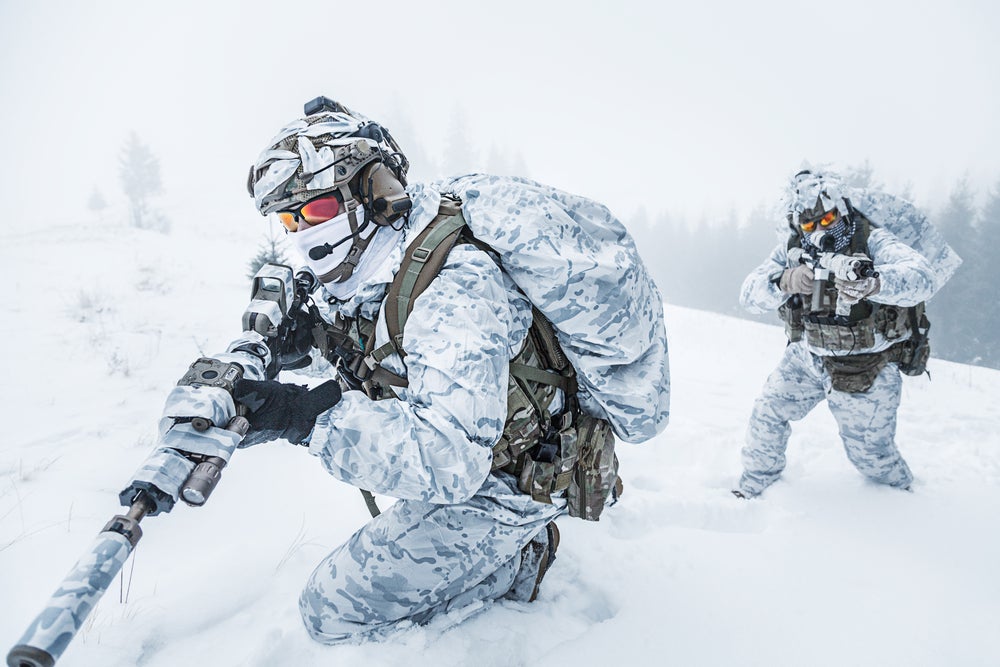The US Department of Defense (DoD) published its Arctic Strategy report on 22 July 2024.
The DoD has adopted a “monitor and respond” approach to the Arctic, prioritising stability and preserving US interests. The paper highlights the threats posed in the region, namely an increased Chinese presence in the Arctic and Russian militarisation which has continued even as Russian military focus remains on Ukraine. The DoD will counter these threats by “enhancing our domain awareness and Arctic capabilities, engaging with Allies, partners and key stakeholders, and exercising tailored presence.”
Since the Russian full-scale invasion of Ukraine in 2022, the Arctic has witnessed increased competition between great powers. Previously, the motto of Arctic policy for all Arctic Council members had been “high north, low tensions” – but this is no longer the case. Post-invasion, all other Arctic states suspended co-operation with Russia within the Arctic Council and in June 2022 agreed to reconstruct the council without Russian involvement. Furthermore, Russia’s aggression prompted Finland and Sweden’s applications to join NATO. These were accepted in 2023 and 2024 respectively. All non-Russian Arctic countries are now part of NATO, bringing tensions between Russia and the West into sharper focus in the region.
In 2018 China declared itself a “near-polar power”
Worryingly for the DoD, Russia and China have increased their Arctic co-operation. Private and state Chinese companies have tens of billions of dollars invested in resource extraction in the Russian Arctic and their countries’ navies held joint exercises in the region in 2023. Both states have increased their focus on the Arctic in recent years. China in 2018 published an Arctic Policy that declared it to be a “near polar power” wishing to establish a “polar silk road” through the region, while in 2023 Russia’s Foreign Policy Concept raised the Arctic to their second priority, just behind the “near abroad” which includes Ukraine and other post-Soviet states.
The DoD strategy paper comes after the White House’s 2022 National Strategy for the Arctic Region which outlined the US interest in the Arctic more broadly, covering four pillars: security, climate change and environmental protection, sustainable economic development, and international co-operation and governance. The DoD 2024 report focuses primarily on two areas, C4ISR [command, control, communications, computers, intelligence, surveillance and reconnaissance] and joint exercises. They outlined plans to expand the US Northern Command to upgrade current land sensing equipment and explore options for space-based intelligence, surveillance and reconnaissance (ISR) capabilities.
A bespoke space ISR arrangement for the Arctic is necessary because satellites placed in geostationary orbit have poor functionality beyond 65 degrees north latitude where electromagnetic interference further disrupts sensor functions. The paper also sets out plans to improve sensor and communications capacity through NORAD [the North American Aerospace Defense Command]. Additionally, in 2022 Canada allocated US$27.88 billion over the next two decades as their contribution to NORAD modernisation.
Cold weather operations are hazardous and require special training
The second aim of the DoD paper is to increase military exercises in the Arctic. The DoD wants to ensure that the Joint Force can deploy in the region, overcoming climatic and logistical impediments. Hydraulics are difficult to operate below -15 degrees C and standard batteries do not hold their charge in low temperatures, so these technologies need to be redesigned to function in cold weather conditions. Operating in cold weather can also be hazardous, so specific training is required.
The US deployed the Lockheed Martin F-35 at Pituffik, Greenland for the first time in January 2023 and successfully tested the platform in Arctic conditions.
Sweden and Finland’s membership of NATO has increased the potential for interoperability in the Arctic as all members have access to shared equipment, funding streams and joint exercises. The most recent joint exercise was NORDIC RESPONSE held between 3 and 14 March 2024, consisting of 20,000 soldiers, 50 naval vessels and 110 aircraft and the US participated by sending the marines of the 1st Battalion, 2nd Marine Regiment.
If NATO’s strategic deterrent is to remain potent in the Arctic, High North nations must have the logistical capacity to become host nations and non-Arctic countries need to have the capacity to operate in Arctic conditions, else the potential force NATO could field in the Arctic would be significantly limited. At the same time, a careful balance must be struck in re-inforcing military preparedness while avoiding an Arctic arms race if possible.
However, the US still lags considerably behind Russia in the number of icebreakers it possesses. The US Coast Guard only operates 2 icebreaking vessels while Russia owns more than 50 currently in operation. The DoD report promises to support the USCG in the acquisition of 8 more icebreakers over the long term, but this is still fewer than Russia which has at least 20 more icebreakers planned or under construction. 9 of these are to be nuclear-powered. China is also constructing nuclear icebreakers.
Reflecting increased tensions in the region, Russia in June 2024 tested its Project 23550 combat icebreaker armed with an AK-176MA 76mm main gun and the potential for cruise missiles. Western reticence to militarise the Arctic may not stop Russia from doing the same. The DoD report is reflective of heightened tensions in the Arctic, and the US and its allies are responding by increasing military preparedness and surveillance while avoiding escalation. Whether this will be enough to counter Russian militarisation and greater Chinese interest in the Arctic remains to be seen.





